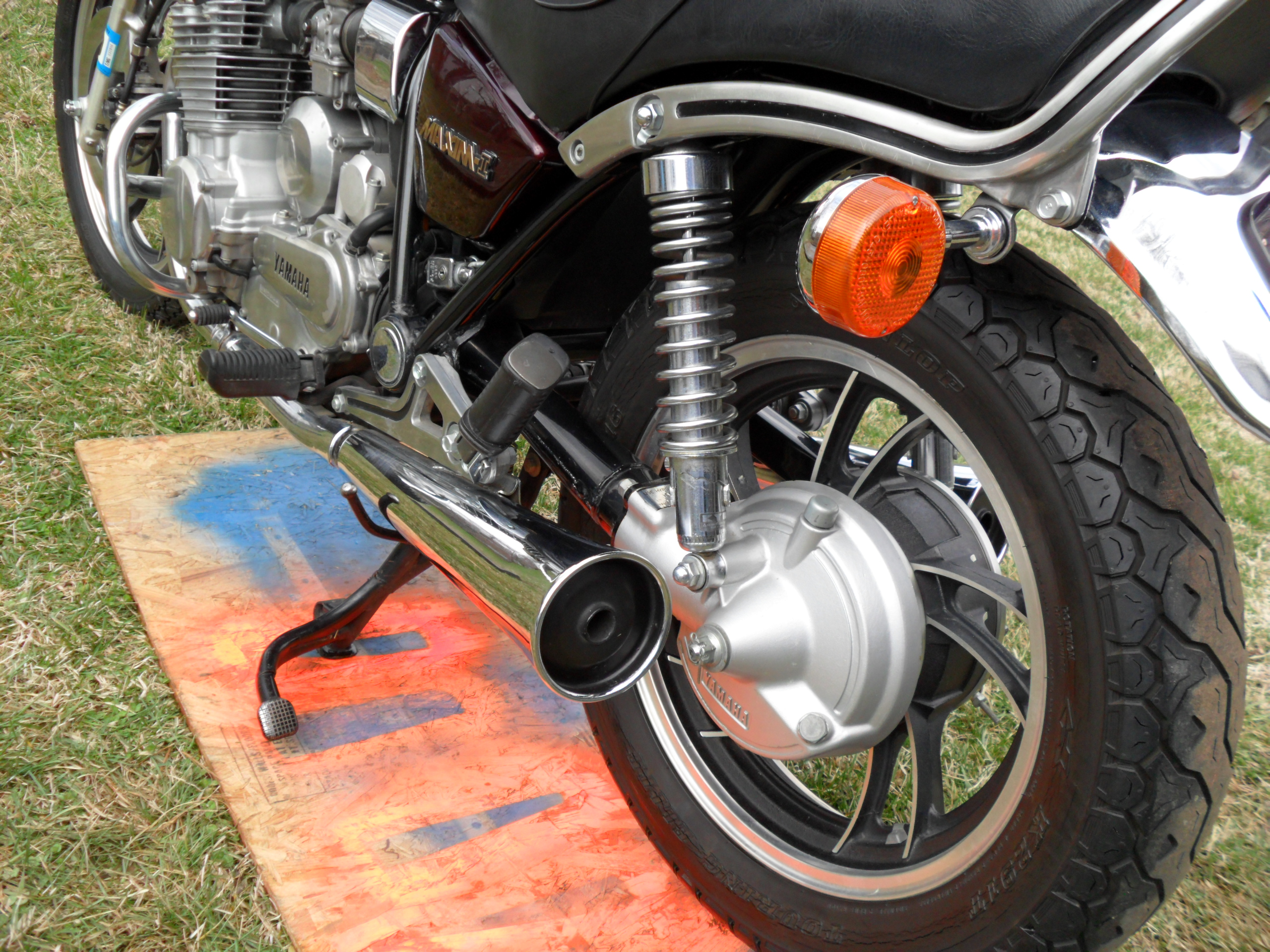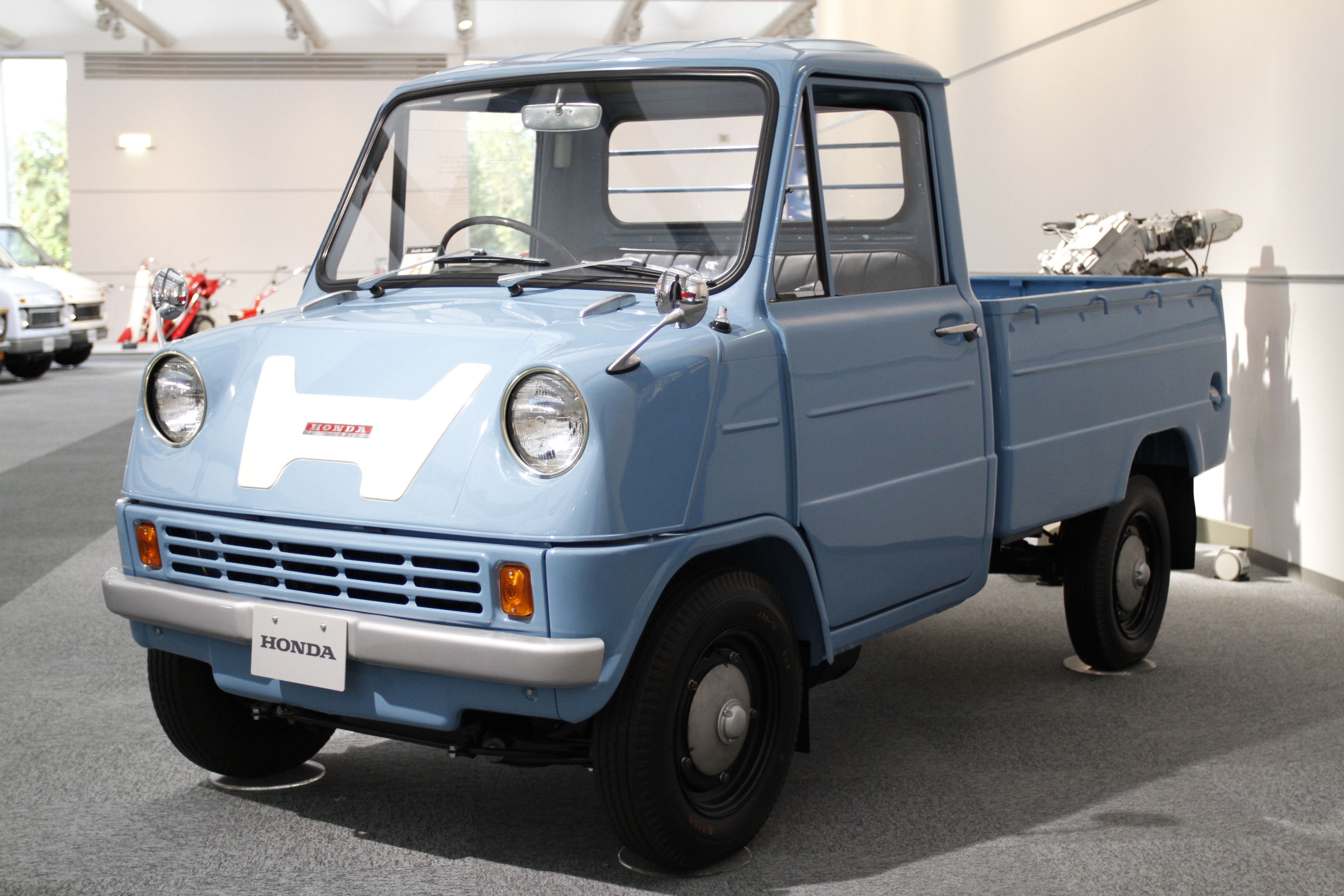|
Honda CBR600F
The Honda CBR600F is a CBR series inline four-cylinder sport bike motorcycle made by Honda Motorcycles. The first model of the CBR600F was sold from 1987 to 1990 and is known in the US as the Hurricane. In Austria and Mexico, a smaller version, called CBR500F, was offered. The subsequent models are designated as CBR600F2, F3, F4, and F4i respectively. In 2011, Honda released a more modern model with the same name. The original CBR600F, along with the CBR750F and CBR1000F were Honda's first inline four-cylinder, fully-faired sport bikes. The style was said to be influenced by a brief European trend toward a smooth and completely enclosed fairing such as in the Ducati Paso. __TOC__ History CBR600F2 (1991–1994) The CBR600F2 was produced from 1991 to 1994. It was introduced to replace the original CBR600F Hurricane, and for its time, was considered one of Honda's most modern and innovative sport bikes. Development of the CBR600F2 began in early 1989. Hurricane LPL I ... [...More Info...] [...Related Items...] OR: [Wikipedia] [Google] [Baidu] |
Ram-air
A ram-air intake is an intake design which uses the dynamic air pressure created by vehicle motion, or ram pressure, to increase the static air pressure inside of the intake manifold on an internal combustion engine, thus allowing a greater massflow through the engine and thereby increasing engine power. Application The ram-air intake works by reducing the intake air velocity by increasing the cross-sectional area of the intake ducting. When gas velocity decreases the pressure is increased. The increased pressure in the air box will ultimately have a positive effect on engine output as more oxygen will enter the cylinder during each engine cycle. Ram-air systems are used on high-performance vehicles, most often on performance cars, and, extremely rarely, motorcycles. The 1990 Kawasaki Ninja ZX-11 C1 model used a ram-air intake, the very first on any production motorcycle. Ram-air was a feature on some cars in the sixties. It fell out of favor in the seventies, but recently made ... [...More Info...] [...Related Items...] OR: [Wikipedia] [Google] [Baidu] |
Josef Boyd
Josef A. Boyd (October 20, 1948 – May 27, 1998) was an American engineer employed by Honda R&D Americas in Torrance, California. He died in an accident involving another Honda employee, Dirk Vandenberg, while they were evaluating a pre-production version of the Honda CBR600F4 motorcycle. At the time of the accident, Boyd was apparently photographing the motorcycle being ridden by Mr Vandenberg at Willow Springs Raceway in Rosamond, California. Vandenberg also died in the accident. Dedications Following his death, the words, "Dedicated to Super Evaluators Dirk Vandenberg and Josef Boyd", were embossed in raised letters on the inside of the Honda CBR600F4's upper fairing. Canadian motorcycle racer Miguel Duhamel Miguel Duhamel (born May 26, 1967) is a Canadian former professional motorcycle racer. He is the son of Canadian Motorsport Hall of Fame member Yvon Duhamel. He is tied with Toni Elias for the fourth-winningest rider in the AMA Superbike serie ... dedicated his ... [...More Info...] [...Related Items...] OR: [Wikipedia] [Google] [Baidu] |
Honda CBR900RR
The Honda CBR900RR, or FireBlade in some countries, is a sport bike, part of the CBR series introduced in 1992 by Honda. It was the first of a series of large-displacement Honda models to carry the RR suffix. The development of the first generation CBR900RR was led by Tadao Baba. History CBR900RR (893cc) SC28 The first generation CBR900RR was introduced in 1992 with an inline-four engine. It set a precedent for lightweight in the superbike class, being much lighter than other large-displacement bikes of the time. The CBR900RR was based on an advanced research stage model known within Honda as the "CBR750RR". With the objective of equaling the acceleration of competitors’ flagship sport bikes, Honda increased the stroke of its inline 4-cylinder 750 cc engine and thus raised displacement to 893cc. Complementing its power performance was the bike's dry weight of just 185 kg, wheelbase of 1,405 mm, and a body almost identical to that of the advanced research stage ... [...More Info...] [...Related Items...] OR: [Wikipedia] [Google] [Baidu] |
Bore (engine)
In a piston engine, the bore (or cylinder bore) is the diameter of each cylinder. Engine displacement is calculated based on bore, stroke length and the number of cylinders: displacement = The stroke ratio, determined by dividing the bore by the stroke, traditionally indicated whether an engine was designed for power at high engine speeds ( rpm) or torque at lower engine speeds. The term "bore" can also be applied to the bore of a locomotive cylinder or steam engine pistons. In steam locomotives The term bore also applies to the cylinder of a steam locomotive or steam engine. Bore pitch Bore pitch is the distance between the centerline of a cylinder bore to the centerline of the next cylinder bore adjacent to it in an internal combustion engine. It's also referred to as the "mean cylinder width", "bore spacing", "bore center distance" and "cylinder spacing". The bore pitch is always larger than the inside diameter of the cylinder (the bore and piston diameter) sinc ... [...More Info...] [...Related Items...] OR: [Wikipedia] [Google] [Baidu] |
Stroke (engine)
In the context of an internal combustion engine, the term stroke has the following related meanings: * A phase of the engine's cycle (e.g. compression stroke, exhaust stroke), during which the piston travels from top to bottom or vice versa. * The type of power cycle used by a piston engine (e.g. two-stroke engine, four-stroke engine). * "Stroke length", the distance travelled by the piston during each cycle. The stroke length, along with bore diameter, determines the engine's displacement. Phases in the power cycle Commonly used engine phases or strokes (i.e. those used in a four-stroke engine) are described below. Other types of engines can have very different phases. Induction-intake stroke The induction stroke is the first phase in a four-stroke (e.g. Otto cycle or Diesel cycle) engine. It involves the downward movement of the piston, creating a partial vacuum that draws an air-fuel mixture (or air alone, in the case of a direct injection engine) into the combustion ... [...More Info...] [...Related Items...] OR: [Wikipedia] [Google] [Baidu] |
Swingarm
A swingarm ( or swinging arm), originally known as a swing fork or pivoted fork, is a single or double sided mechanical device which attaches the rear wheel of a motorcycle to its body, allowing it to pivot vertically. The main component of the rear suspension of most modern motorbikes and ATVs, it holds the rear axle firmly, while pivoting to absorb bumps and suspension loads induced by the rider, acceleration, and braking. Originally motorcycles had no rear suspension, as their frames were little more than stronger versions of the classic diamond frame of a bicycle. Many types of suspension were tried, including Indian's leaf spring suspended swingarm, and Matchless's cantilevered coiled-spring swingarm. Immediately before and after World War II, the plunger suspension, in which the axle moved up and down two vertical posts, became commonplace. In the latter, the movement in each direction was against coiled springs. Some manufacturers, such as Greeves, used swinga ... [...More Info...] [...Related Items...] OR: [Wikipedia] [Google] [Baidu] |
Crankcase
A crankcase is the housing in a reciprocating engine, piston engine that surrounds the crankshaft. In most modern engines, the crankcase is integrated into the engine block. Two-stroke engines typically use a crankcase-compression design, resulting in the fuel/air mixture passing through the crankcase before entering the Cylinder (engine), cylinder(s). This design of the engine does not include an oil sump in the crankcase. Four-stroke engines typically have an oil sump at the bottom of the crankcase and the majority of the engine's oil is held within the crankcase. The fuel/air mixture does not pass through the crankcase, though a small amount of exhaust gasses often enter as "blow-by" from the combustion chamber, particularly in engines with worn rings. The crankcase often forms the upper half of the main bearing journals (with the bearing caps forming the other half), although in some engines the crankcase completely surrounds the main bearing journals. An ''open-crank'' ... [...More Info...] [...Related Items...] OR: [Wikipedia] [Google] [Baidu] |
Motorcycle Frame
A motorcycle frame is a motorcycle's core structure. It supports the engine, provides a location for the steering and motorcycle suspension, rear suspension, and supports the rider and any passenger or luggage. Also attached to the frame are the fuel tank and battery. At the front of the frame is found the steering head tube that holds the Swivel, pivoting Motorcycle fork, front fork, while at the rear there is a hinge, pivot point for the swingarm suspension motion. Some motorcycles include the engine as a load-bearing stressed member; while some other bikes do not use a single frame, but instead have a front and a rear subframe attached to the engine. Materials In the early days, motorcycles were little more than motorised bicycles, and consequently frames were tubular steel. While the use of steel tubing is still common, in modern times other materials, such as titanium, aluminium, magnesium, and carbon-fibre, along with composites of these materials, are now used. As differen ... [...More Info...] [...Related Items...] OR: [Wikipedia] [Google] [Baidu] |
Carburettor
A carburetor (also spelled carburettor or carburetter) is a device used by a gasoline internal combustion engine to control and mix air and fuel entering the engine. The primary method of adding fuel to the intake air is through the Venturi effect or Bernoulli's principle or with a Pitot tube in the main metering circuit, though various other components are also used to provide extra fuel or air in specific circumstances. Since the 1990s, carburetors have been largely replaced by fuel injection for cars and trucks, but carburetors are still used by some small engines (e.g. lawnmowers, generators, and concrete mixers) and motorcycles. In addition, they are still widely used on piston-engine–driven aircraft. Diesel engines have always used fuel injection instead of carburetors, as the compression-based combustion of diesel requires the greater precision and pressure of fuel injection. Etymology The term ''carburetor'' is derived from the verb ''carburet'', which means ... [...More Info...] [...Related Items...] OR: [Wikipedia] [Google] [Baidu] |
Honda CBR F4 (1999) Wheelie
commonly known as just Honda, is a Japanese multinational corporation, multinational Conglomerate (company), conglomerate automotive manufacturer headquartered in Minato, Tokyo, Japan. Founded in October 1946 by Soichiro Honda, Honda has been the world's largest motorcycle manufacturer since 1959, reaching a production of 500 million . It is also the world's largest manufacturer of internal combustion engines measured by number of units, producing more than 14 million internal combustion engines each year. Honda became the second-largest Japanese automobile manufacturer in 2001. In 2015, Honda was the eighth largest automobile manufacturer in the world. The company has also built and sold the most produced motor vehicle in history, the Honda Super Cub. Honda was the first Japanese automobile manufacturer to release a dedicated luxury brand, Acura, on 27 March 1986. Aside from their core automobile and motorcycle businesses, Honda also manufactures garden equipment, marine eng ... [...More Info...] [...Related Items...] OR: [Wikipedia] [Google] [Baidu] |








